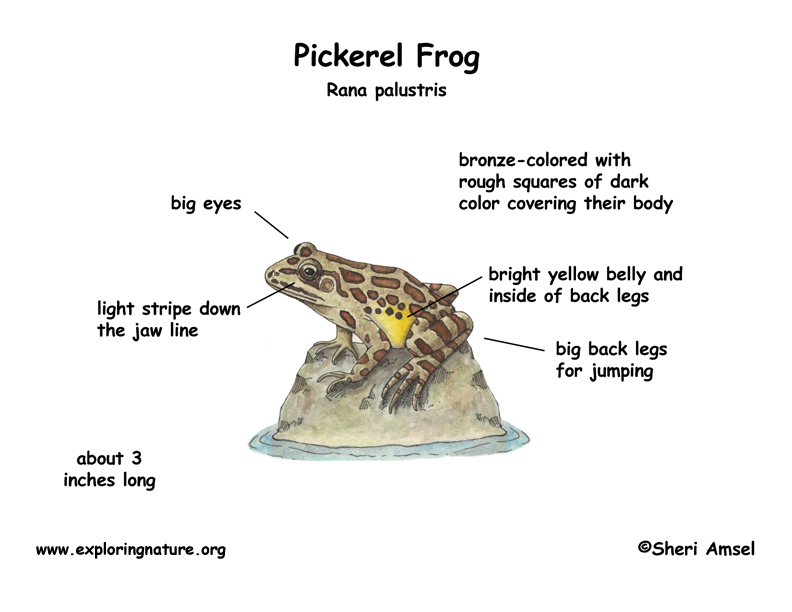

They are found in the eastern part of southern Canada and the U.S.
They live in rivers, streams, ponds, lakes and wetlands.
They are about 3 inches long and are bronze-colored with rough squares of dark color covering their body.
They stay in or close to the water their whole lives.
They eat insects and other small animals in the water.
They are eaten by birds, snapping turtles, bigger frogs, and any other meat-eating pond animal.
Males call in the spring to attract a mate. The female lays thousands of eggs.
Kingdom: Animalia
Phylum: Chordata
Subphylum: Vertebrata
Class: Amphibia
Order: Anura
Family: Ranidae
Genus: Rana
Species: R. palustris
When you research information you must cite the reference. Citing for websites is different from citing from books, magazines and periodicals. The style of citing shown here is from the MLA Style Citations (Modern Language Association).
When citing a WEBSITE the general format is as follows.
Author Last Name, First Name(s). "Title: Subtitle of Part of Web Page, if appropriate." Title: Subtitle: Section of Page if appropriate. Sponsoring/Publishing Agency, If Given. Additional significant descriptive information. Date of Electronic Publication or other Date, such as Last Updated. Day Month Year of access < URL >.
Amsel, Sheri. "Frog (Pickerel)" Exploring Nature Educational Resource ©2005-2024. December 14, 2024
< http://exploringnature.org/db/view/62 >


